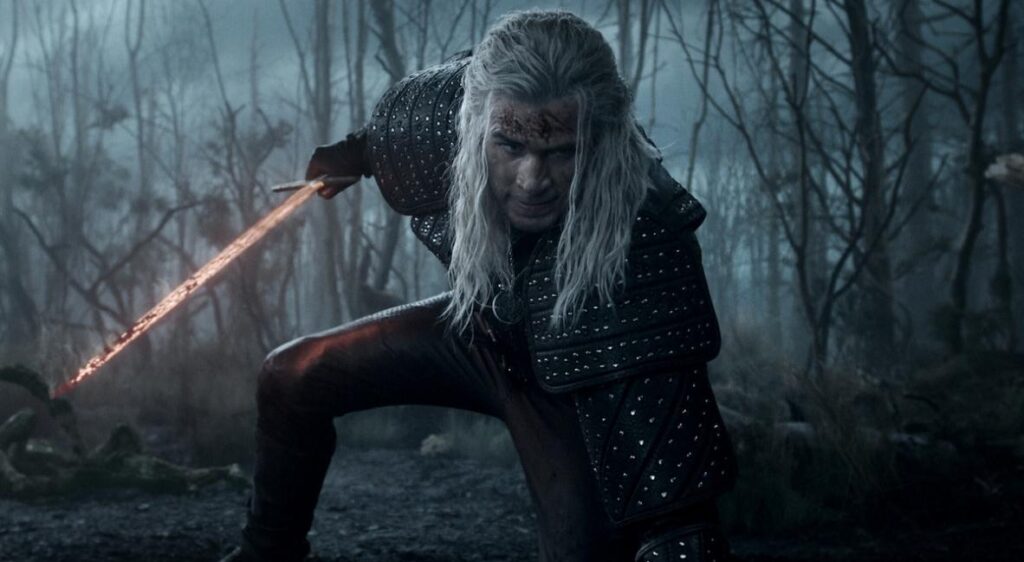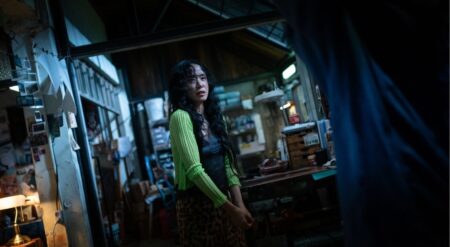The Witcher Season 4 is finally here, and it tells Part 1 of a two-part finale that has been mapped out with the first season in mind. And it feels like it. Based on Andrzej Sapkowski’s series of books, Season 4 begins the tail end of Netflix’s adaptation and starts to bring the three remaining books (Baptism of Fire, The Tower of the Swallow, and Lady of the Lake) to life on the screen.
Set after the catastrophic Continent-altering events of Season 3, Geralt of Rivia (Liam Hemsworth), Yennefer of Vengerberg (Anya Chalotra), and Ciri (Freya Allan) are separated by a brutal, escalating war. The Witcher Season 4 zooms in even more on each character’s individual paths as they confront different enemies and solve different challenges that their past choices have created or are connected to.
While The Witcher Season 4 marks the beginning of the core three characters trying to reunite, it also gives audiences vital understandings of who they are as individuals. For Ciri, it brings her closer to who she is in the video games. Across each of their journeys, they meet unexpected allies and wind up forging new “found families” that, in true Witcher fashion, are all subtly connected.
Liam Hemsworth’s Geralt of Rivia is different from his predecessor, but he has promise.
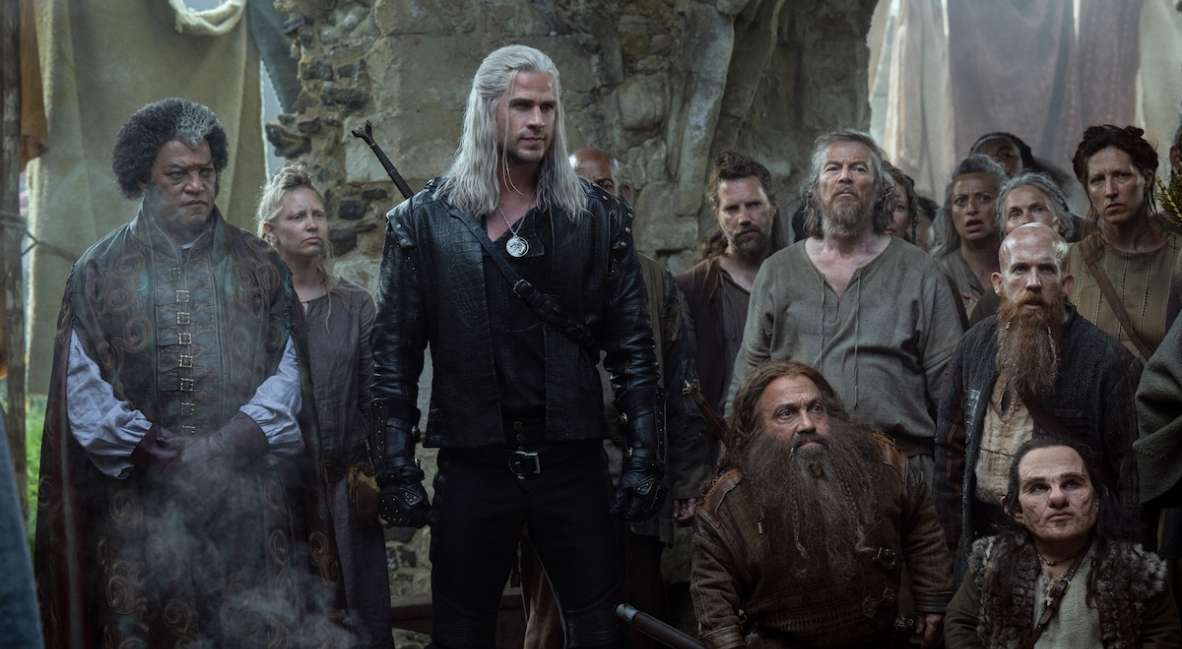
The elephant in the room is the recasting of the series’s title character. To his credit, Liam Hemsworth clearly puts every bit of himself into his role, even if he has large leather pants to fill. The difficulty is, however, that the material doesn’t rise up to meet him.
With so many flashback moments in the opening episode of The Witcher Season 4, you can tell that the series is trying to make you forget that Hemsworth is standing where Henry Cavill once stood. Even more so, his great love story with Yennefer requires chemistry, which at this point needs to be rekindled.
The decision to include so many flashbacks instead of just letting Hemsworth step in leaves him on an uneven footing. If the showrunners are trying so hard for us to see him as Geralt, are they doing it for themselves or us? It made me think of similar important recastings, most recently the character of Claudia in Interview With The Vampire. One of the three main characters of the series had to be recast, and the story didn’t skip a beat. They just cast the new actress, Claudia, and that is the treatment I wish that Hemsworth had received.
This issue is even more frustrating once Yennefer and Geralt finally reunite. Their chemistry, once we’ve seen them trying to get back to one another over multiple episodes, gives their reunion weight. They didn’t need the minor flashbacks to establish it; the longing for each other is there, even if the audience sees Geralt differently.
Geralt in The Witcher Season 4 is all about fatherhood and vulnerability.
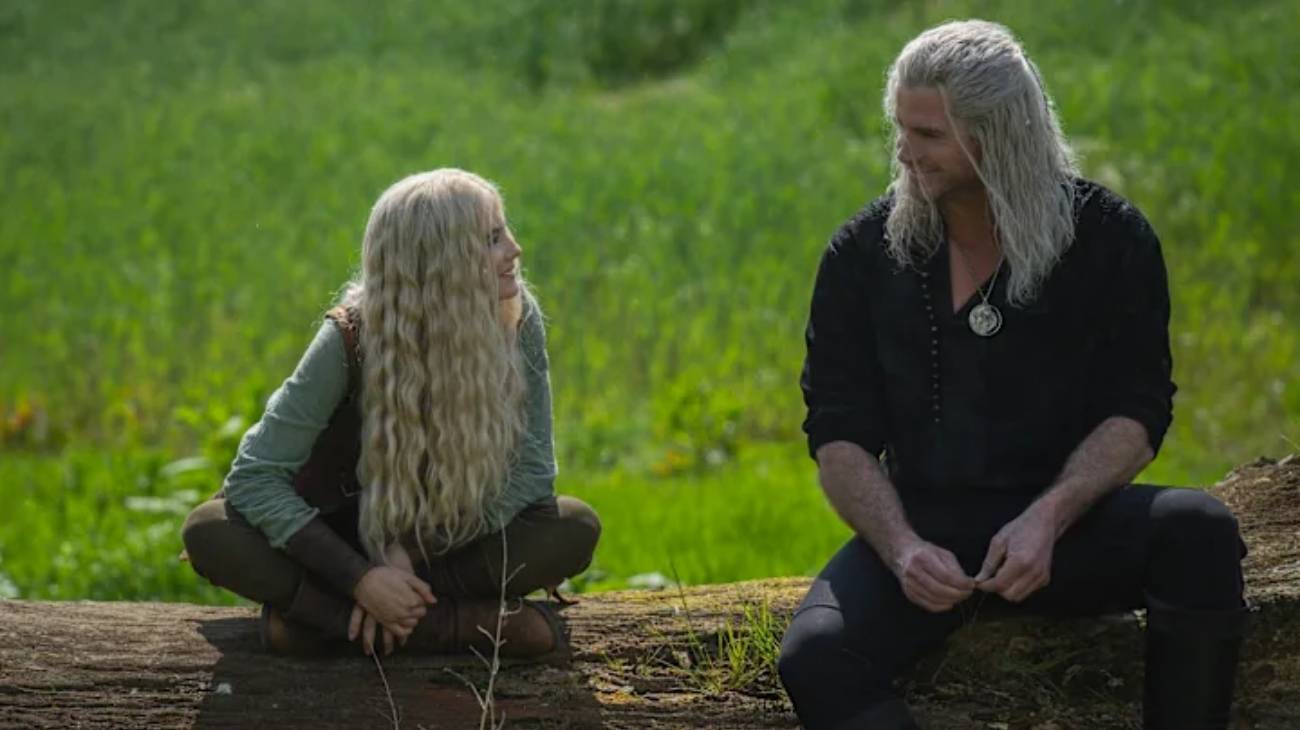
Instead, much of his time on screen outside his action sequences is spent not trying to embody Geralt, but to embody his predecessor’s version of Geralt, which just makes it feel more like playing dress-up than dedicated acting. That said, in action, Hemsworth does shine and hold his own, even if the midling CGI lets him down. In fact, the large set pieces, whether they are just a city background or large fiery standoffs, stand out like a sore thumb—something that is becoming too common with Netflix productions, film or otherwise.
But if there is one key element to highlight in The Witcher Season 4 when it comes to Geralt, it’s in how he embraces fatherhood. Ciri is his daughter. His daughter by Destiny, sure, but his love for her is equal to any father for their daughter.
Throughout this season, we see Geralt think back on times with Ciri where he did her hair, cared for her, taught her, and fought with her. The moments that he spends with her don’t feel as forced as the moments with Yennefer, and instead allow Hemsworth to develop the vulnerable and tender side of Geralt that we only just began to see with Geralt in Season 3.
That vulnerability on display also comes from how much physically weaker Geralt is following his brutal defeat by Vilgefortz (Mahesh Jadu). With a wound that he won’t let heal, he becomes even more reliant on Jaskier (Joey Batey) and a new group they form, the Hanza.
Ciri isn’t the daughter that Geralt lost in The Witcher Season 4, and that’s what’s exciting.
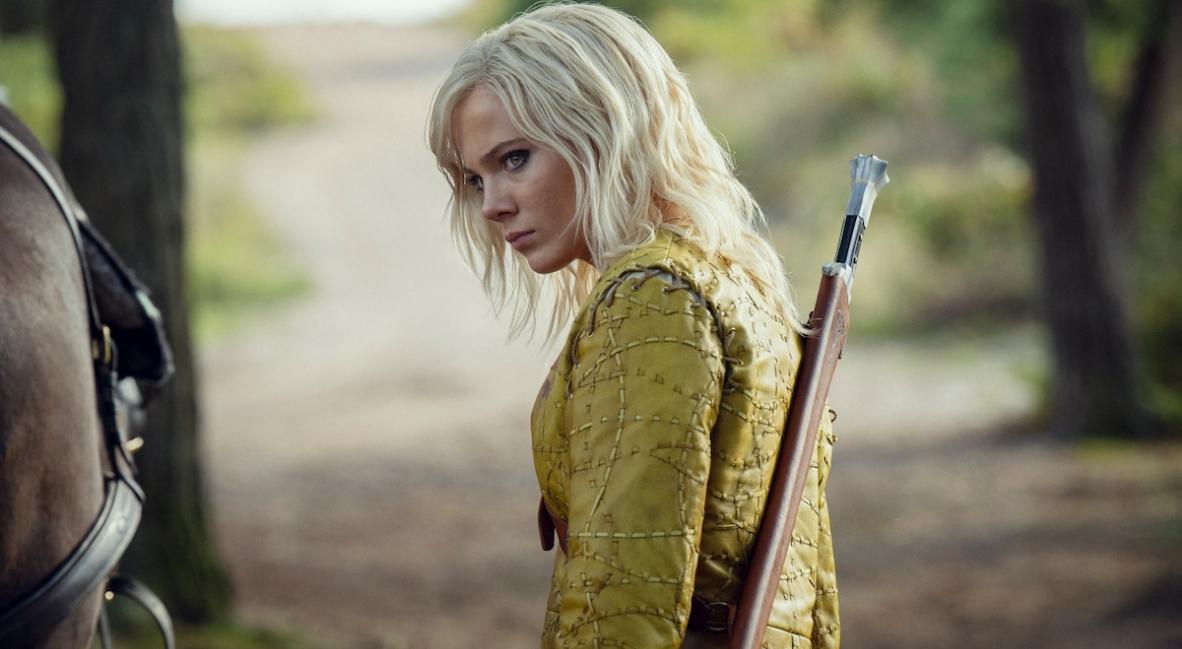
Having come together against Emperor Emhyr of Nilfgaard, Geralt’s only focus is to reunite his family, which includes his daughter Ciri, but also Yennefer, even if the latter is too busy amassing her own army to have any real impact on Geralt’s path this season.
But the Ciri in Geralt’s memories is far from the character we see on the screen this season. Ciri succeeds this season, finding new life under the name Falka. Captured by nomadic traders, only to be rescued by a squad of misfit teenagers known as the Rats, she finds a newfound family as she struggles with her powers.
Ultimately, Ciri is finding her way, hiding who she is but putting her hard-won skills to the test. Accepted by the group of young thieves, Ciri finds love and friendship. Ciri also embraces who she is and how she likes to fight, but also learns to hold on to someone and trust them, something her life hasn’t truly afforded her. While her chemistry with her love interest this season is almost non-existent, what Ciri learns with them is what makes this part of her journey interesting.
What’s intriguing is how, even with love and family, even while not alone, Ciri’s darkness is growing. Her ability to kill others isn’t just about her developing skills from her training; it’s about becoming entirely cold to the world around her. She becomes so focused on the Rats that the other lives around her don’t matter, and that is dangerous for a young woman who has been hurt by the world so profoundly and been given such immense power.
The Witcher Season 4 sets up the series finale, but its fast pace loses some of its impact.

Regarding new characters, Laurence Fishburne’s Regis is a wonderful addition. But the animated sequence in Episode 5 is what highlights the weight of his vampirism. Where live-action offers many wonders, animation still allows for a level of intimacy and depth you can’t get elsewhere. The animation style aids the simplification of his backstory, and the pacing allows worldbuilding without bogging down the larger story.
Regis also forces Geralt to confront a part of himself that he tried to forget. He can’t trust Regis initially because he is a vampire and thus always fighting his worst impulses. However, Geralt has increasingly shown, in this season and before, that he, too, is ruled by them. Still, Regis pulls every member of Geralt’s group together by encouraging them to look at the past.
While we get small tidbits about each character we see in the Hanza, nothing feels as emotionally defined as Regis’s story. This makes them little more than gimmicks, existing in the series to make sure that Geralt isn’t alone. While the actors behind the characters deliver solid performances, the material they work with undermines their significance. They are there just to leave and make way for the real family to come in.
The Witcher Season 4 is about choices over destiny, and how they ripple through our lives.
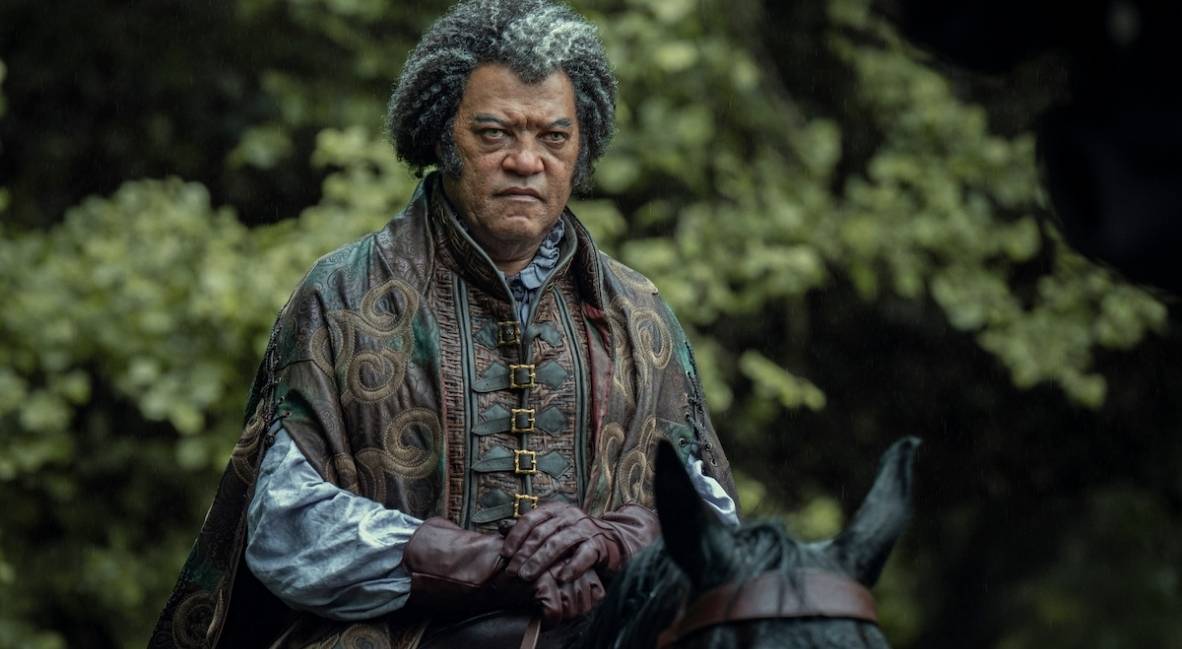
The Witcher Season 4‘s larger problem is its pacing. As the first part of a two-part finale, as mentioned previously, this season feels like it is speedrunning toward the last of Sapkowski’s books. Because of this, moments that should have a deep emotional impact lack the gravitas of the choices involved, and so much of the developing narrative feels like filler until we finally reach the end. In that way, The Witcher Season 4 feels like a Part 1, as it is explained to be.
There is no room for important moments to breathe, and even still, there is no ability for bad choices to be processed. It’s felt even more deeply because the series has hit the point where everything needs to come together. The prophecy is coming to fruition, and Geralt’s decision not to choose Ciri when she was born is causing larger problems.
The main takeaway from The Witcher Season 4 is the power of choice, how each one we make ripples into others’ lives. It’s complicated, yet simple at the same time; we hold onto our choices and their impacts nonetheless. Each character loses something this season, and ultimately, all cross a line they can’t come back from.
While characters have big moments in The Witcher Season 4, too much exposition can spoil them.

The largest problem this season is that The Witcher’s previous seasons allowed the story to unfold, while the audience pieced it all together. Following the ripples and unraveling the mystery was part of the fun. But in The Witcher Season 4, the showrunners are deeply concerned with explaining everything. A character somewhere in the scene will tell you exactly how every domino fell to get there. And that’s a shame.
While all of these critiques are highlighted in Geralt’s section of the story, and his ragtag group of compatriots, Yennefer’s story this season is weighed down by the number of people in the ensemble cast she has to move, but, more importantly, work against. After the betrayal, Yennefer is dedicated to taking back Aretruza.
Vilgefortz is still trying to maintain power, but Yennefer is training all of the sorceresses left, taking up Tissaia’s place as a leader. As the new leader of Aretruza, or at the very least the leader in charge of taking it back, Yennefer has to put aside her individuality and work for the future of her people. It’s a turn for the character that captures a level of strength that works well, uniting her with the Witchers.
Yennefer moves from being the weakest part of The Witcher Season 4 to its strongest.
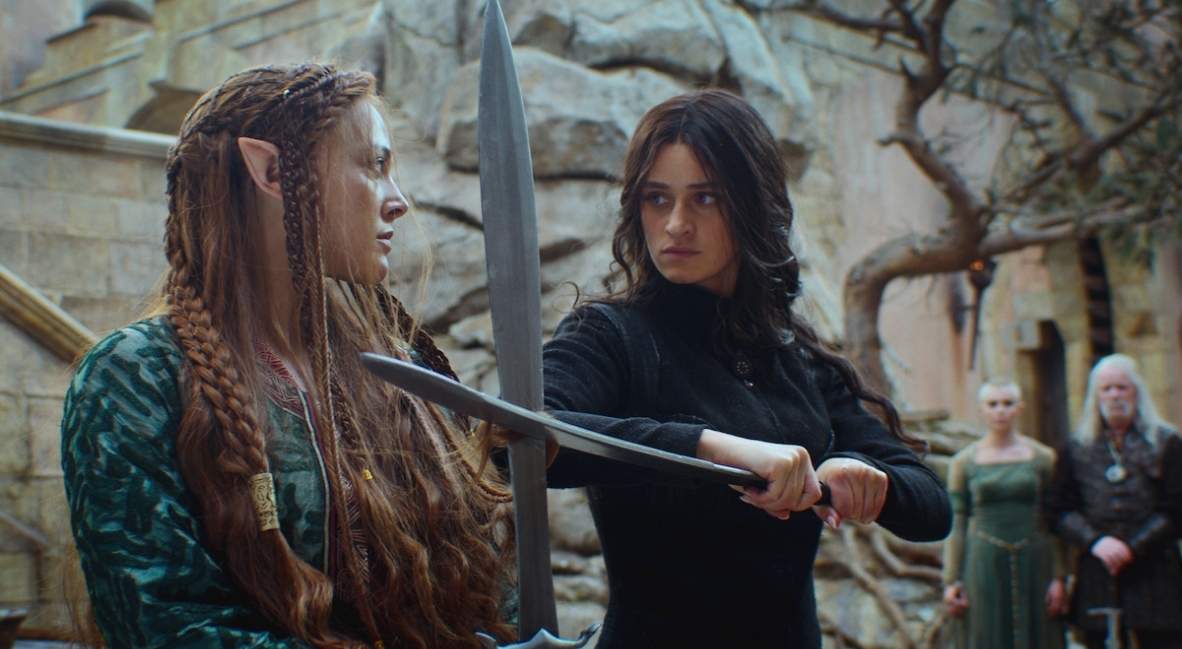
In battle, Anya Chalotra as Yennefer is the best part of the series. She is powerful, even if she’s quick to anger. At the same time, her corps is torn apart by being captured or dying in battle. The only real problem in the action sequences is that so many of the mages we have come to see throughout The Witcher Season 4 drop like flies. Yes, it makes her stand out, but it also makes the women that she is guiding and protecting feel incredibly weak.
But that is the issue Yennefer has: she is too strong, and Chalotra’s ability to perform action sequences outshines everyone she is next to. In her fight with Vilgefortz, the costume and set design are at their strongest all season, thanks to the attention given to Yennefer as she becomes covered in black blood and increasingly disheveled amid the fighting.
Yennefer in The Witcher Season 4 struggles in the first half, but by the end, she is even more powerful and resolute in her choices. But she isn’t unfeeling; her will is hardened, but her heart isn’t, even as her brutality increased toward the end of the season. She is the hope for Aetruza, and she’s ready to carry that burden, even if it means letting go of someone that she loved so deeply.
Family is central to The Witcher Season 4, as is the question of how to protect it.
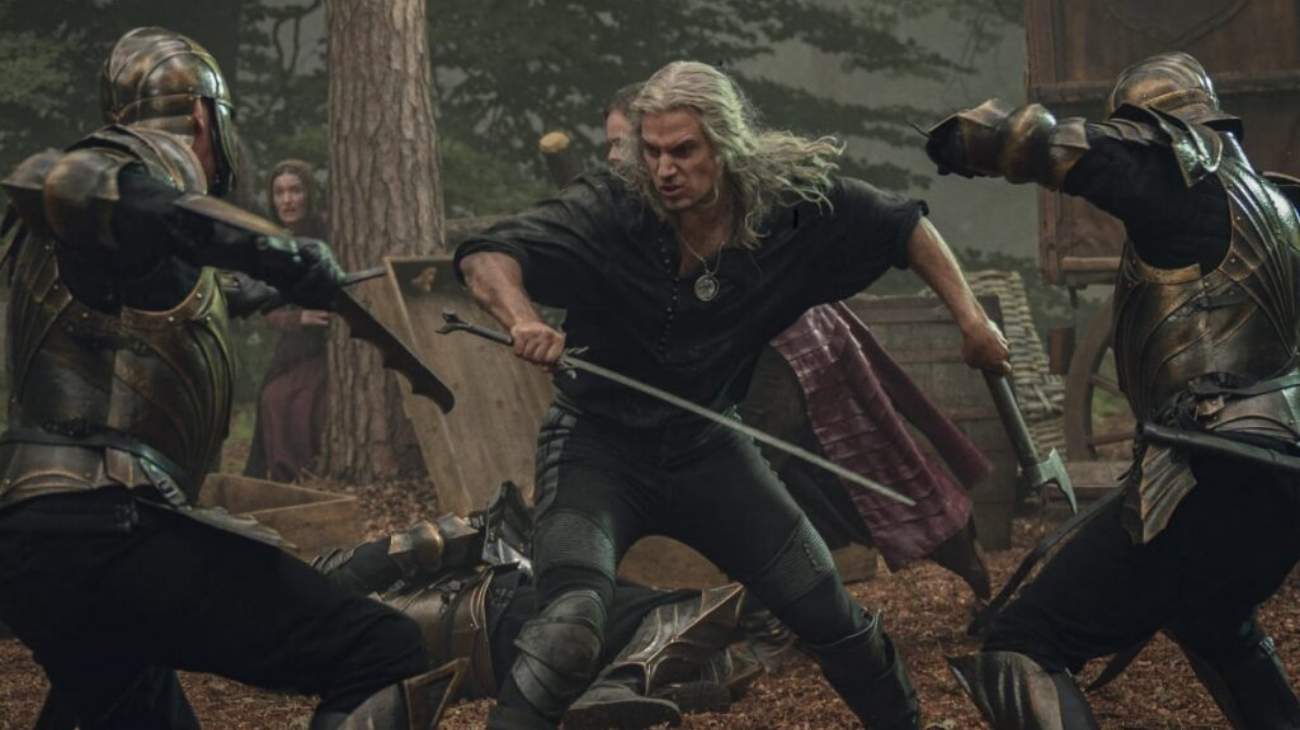
As a whole, The Witcher Season 4 is a mixed bag with thrilling character moments and developments. As Geralt, Ciri, and Yennefer make their way to each other, their road is filled with potholes, but as characters, they continue to move toward the finale. With reunions and choices cascading through the story, this season wears its Part 1 on its sleeves.
However, this first part of the series’ finale is messy to say the least. The effects work isn’t as sharp, the costuming looks cheap at times, especially for the women in the series, and with new armor. Additionally, some wigs are too terrible to forget (Jaskier’s, to be specific), and ultimately, this season is a sprint forward, rather than a layered, developing story.
Frustrating qualities plague the beginning of the season, but the last half of The Witcher Season 4 finds solid ground in good storytelling. The season brings things together, laying the groundwork for what’s next without losing the central characters along the way.
Still, the ensemble cast is washed out by the circumstances, even within the Hanza. We aren’t in the height of the series, but there is still valuable fantasy storytelling to be had here, if only the narrative could shed some of its messy threads and remain focused in The Witcher Season 5.
I can’t say I loved every minute of The Witcher Season 4, but I can say that some moments were too good to throw out the entire series, especially after so much time spent on The Continent. Still, the gems found in the mess aren’t enough to bring back those not already heavily invested in Netflix’s versions of these characters.
The Witcher Season 4 is streaming now, exclusively on Netflix.
Season 1 | Season 2 | Season 3 Pt. 1 | Season 3 Pt. 2 | Blood Origins | Rats: A Witcher Tale
The Witcher Season 4
-
Rating - 6.5/106.5/10
TL;DR
Frustrating qualities plague the beginning of the season, but the last half of The Witcher Season 4 finds solid ground in good storytelling. The season brings things together, laying the groundwork for what’s next without losing the central characters along the way.

